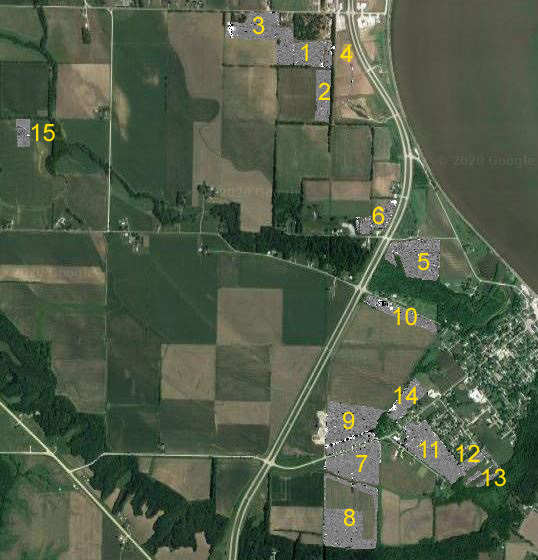Greetings From John Lefgren PhD and Wayne May of Ancient American Magazine: Heartland Research Group
I propose the following as a protocol for sampling charcoal from fire pits next week Dec 8-10, 2020 in Montrose, Iowa.
1. Our scanning in November clearly confirms that there were ancient populations that lived in Montrose before the arrival of the Europeans. The fire pits are very dense suggesting that there were tens of thousands of people living on those lands. We scanned 220 acres and the ancient living area around Montrose was march larger than 1,000 acres. I think that with our existing data we can easily confirm that many more people lived in the area in ancient times as compared to modern times. This fact is significant.
2. The question before us is clearly a matter of discovering the dates for fire pits. We need to place them on the timeline of history. We will do this through the science of Carbon-14 dating.
3. I propose that next week we concentrate on three areas: (a) The cluster of fire pits that are located near the Montrose City Cemetery; (b) The cluster of fire pits that are on the north side of the same lot; (c) Two or three firepits that are located on Wayne May’s Zarahemla Temple Lot.
(4) We would get 4 or 5 charcoal samples from (a), (b), and (c).
(5) After preparing the samples, we would send them to Vilnius Radiocarbon for testing.
 |
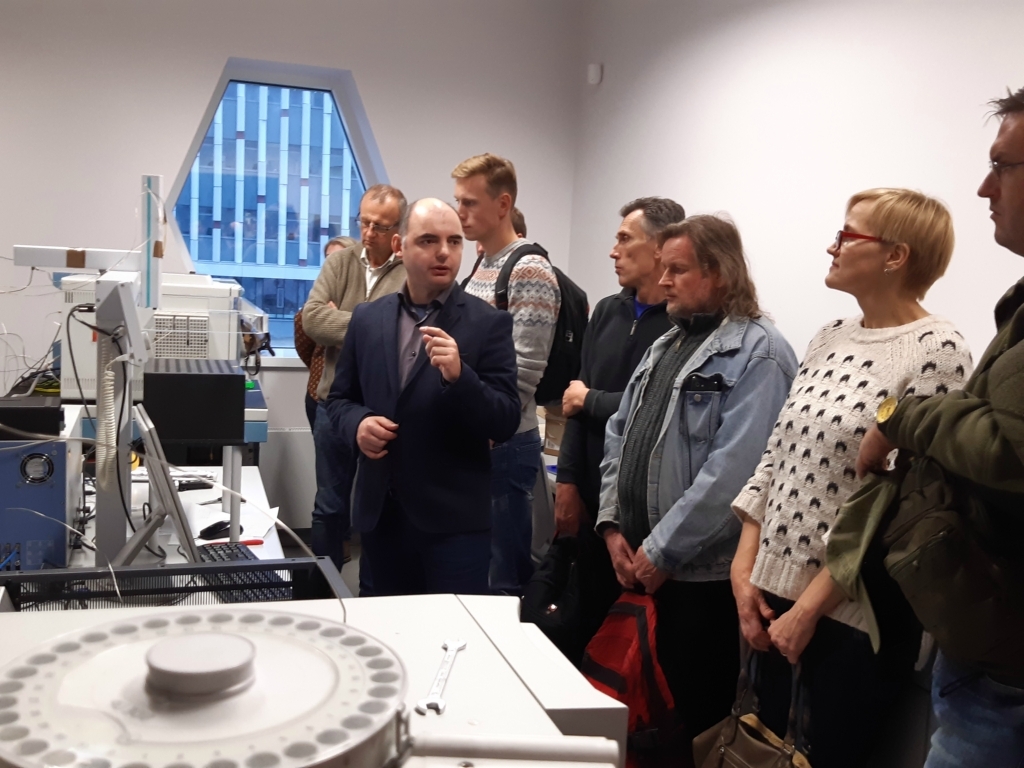 Vilnius Radiocarbon is part of the largest research organization in Lithuania – Center for Physical Sciences and Technology (FTMC). The organization has made over 15,000 Carbon-14 tests for hundreds of companies from around the world. Their laboratory results have been used for reports that are printed in the best scientific journals.Today the organization agreed to open its laboratory to the Heartland Research Group to determine the timeline from the radiocarbon evidence found from charcoal of ancient fires in the ground of Montrose, Iowa. 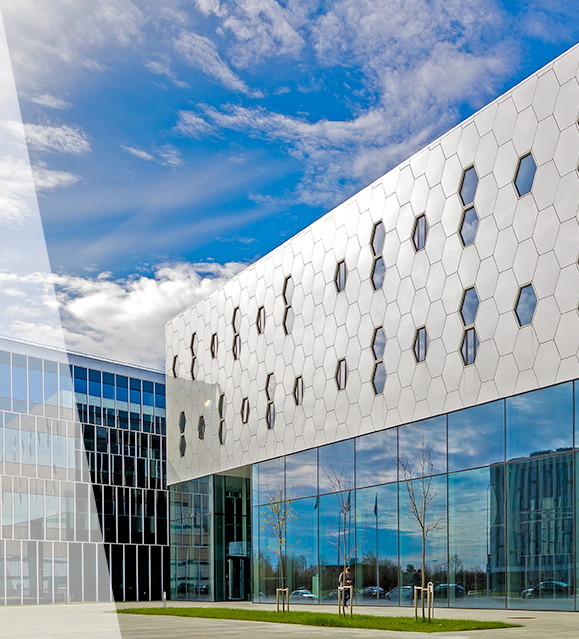 This is a picture of the Radiocarbon Dating Laboratory at the Center for Physical Sciences and Technology in Vilnius, Lithuania. This facility provides radiocarbon C14 dating of samples with most accurate method using Accelerated mass spectrometer manufactured by National Electrostatics Corporation (USA). The laboratory will scientifically determine from our archaeological samples specific dates that are accurate to 30 years. Scanned Sites in Montrose Area – More than 220 Acres. We have used the SENSYS MV X3 equipment to scan more than 220 acres in Montrose, Iowa. The subtle magnetic anomalies measured in nano-Teslas came passively out of the ground and logged on to digital maps that are available for our viewing and analysis. We made these scans only two weeks ago. The scans are now some of the most extensive landscapes with digital accuracy in North America.We now have thousands of specific points where we can collect black charcoal from ancient fires. Carbon-14 testing of the small amounts of charcoal from these ancient fire pits in Montrose will be crucial for funding the phase of our research. Our sponsors want to know more about the dates and time frame of what we see on the digital maps. Next week we will take core samples that are from three to five feet underground. We have located the places of the ancient fires on grids within GPS coordinates that are accurate to +/-0.25″. 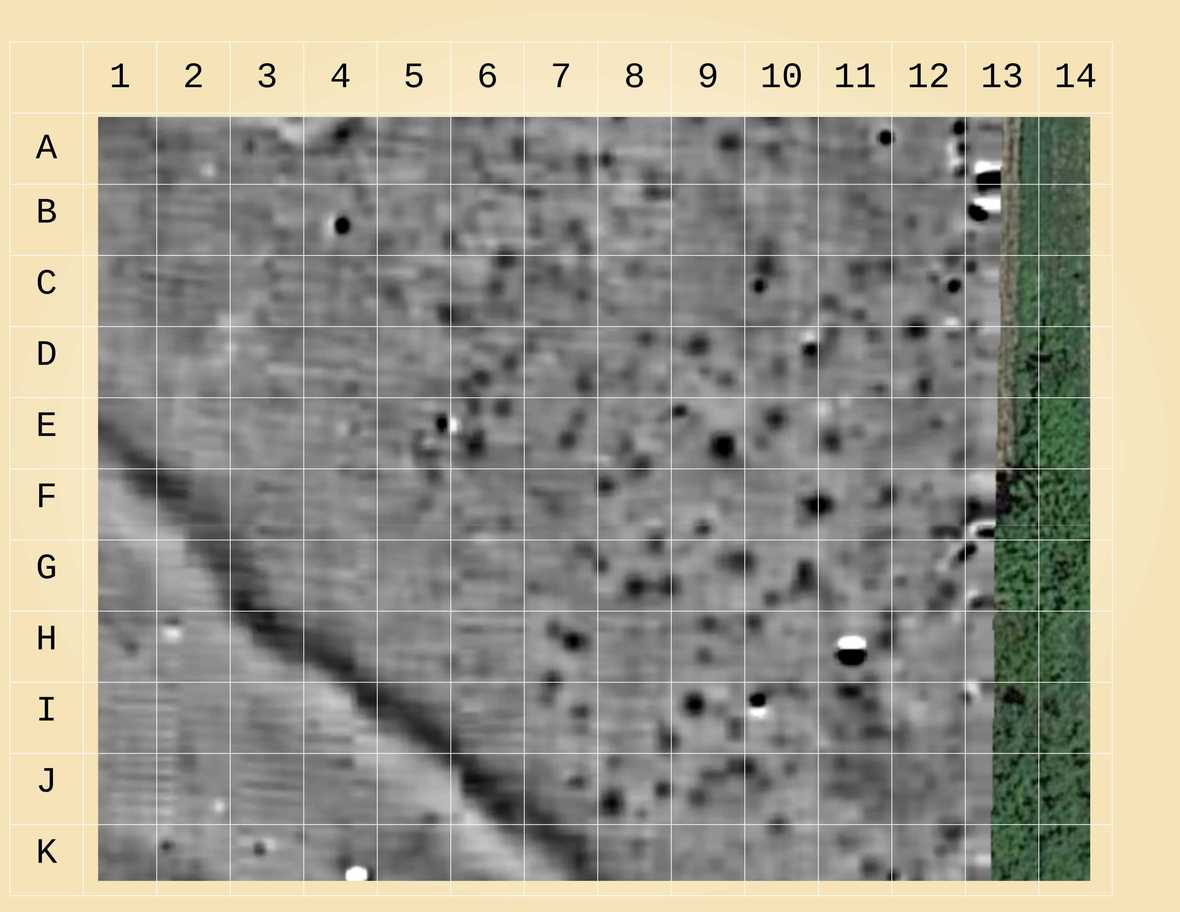 Next week, before seasonal temperatures fall to freezing, we will be in Montrose to take core samples from fire pits found on the digital maps created from the SENSYS data.We have made arrangements with one of the landowners to go on to his property. We will start on a site that is about the size of a football field. We can identify more than a hundred black spots that represent locations for ancient fires. The dating of these fires is significant for the next stage of our research. The above picture is from the surface of land that we scanned on November 18th, 2020, from a cornfield within the city limits of the City of Montrose, Iowa. This field has been under cultivation for more than 150 years. European settlers have not made any major disturbances on this land.Our magnetic scans showed fire pits and lightning strikes from ancient times. Almost 200 years of farming provided the necessary revenue to protect farmland from development. The cultivation of corn for six generations gave a protective cover for the evidence in the ground. Because of corn, we got the magnetic scans that made it possible to create digital maps that show traces of habitation for an ancient city. ©2020 Zarahemla | 2681 Milan Street Easton, PA 18045 US Donate Here |
The Heartland Research Group includes an amazing team. Led by John Lefgren, Phd, Wayne May, Astronomer, Author, Publisher, Kevin Price PhD, Richard Moats, Archaeoastronomer, and Calvin Hamilton, Scientist, along with staff, Scott Willis, Jeff Green, Mike and Betty LaFontaine, Ryan Sorensen, and Mike Baker
Below you will find a wonderful video with Richard Moats speaking about the many earthworks in Ohio. He is the leading Archaeologist with the reading and deciphering of the scans done in Iowa by the Heartland Research Group. Below is his bio:
Richard D. Moats, Avocational Archaeologist, Archaeoastronomer
Richard D. Moats is a twenty-four-year veteran of the United States Air Force. In his career he received the Joint Service Commendation Medal, Two Meritorious Service Medals, and the Defense Meritorious Medal. His skill sets include aircraft accident, criminal, and forensic investigations, remote sensing imagery analysis, and instructor. With these skills, as applied to Native American Archaeology, Rich has investigated many Native American sites in Ohio. He has discovered a site unknown to Archaeology and another site which added significant understanding into the Archaeoastronomy and Religion of a people living 2000 years ago. He has authored many archaeology papers and articles published in the Ohio Archaeologist and Ancient American magazines. He is a member of the Midwestern Epigraphic Society, and the Archaeology Society of Ohio where he was the 2015 Converse Award winner for outstanding contributions to Ohio Archaeology. Rev. Richard D. Moats is an Ordained Evangelist in the Church of Jesus Christ International.
Understanding Hopewell & Adena Earthworks in Ohio
 2- Full Reports Yost Works 18-Page Report The Reconstruction & Archeoastronomy of a Hopewell Geometric Earthwork in Ohio -A Window into Hopewell Religion Fort Glenford 17-Page Report Fort Glenford Hill Top Enclosure -An Adena Mortuary Complex Author:Rev. Richard D. Moats Over 35 Pages of Archaeology in words and color photographs.
2- Full Reports Yost Works 18-Page Report The Reconstruction & Archeoastronomy of a Hopewell Geometric Earthwork in Ohio -A Window into Hopewell Religion Fort Glenford 17-Page Report Fort Glenford Hill Top Enclosure -An Adena Mortuary Complex Author:Rev. Richard D. Moats Over 35 Pages of Archaeology in words and color photographs.
Ancient American Magazine by Wayne May – 1 Year Subscription (4 issues) $32.95

The purpose of Ancient American magazine is to describe the prehistory of the American Continent, regardless of presently fashionable beliefs— to provide a public forum for certified experts and nonprofessionals alike to freely express their views without fear nor favor. Now in its 13th year, the magazines readership continues to expand and readers worldwide anticipate it’s arrival every quarter. It is filled with information on all ancient cultures of the Americas.
The sign before the Birth of Christ- As Witnessed at the Newark Earthworks in Ohio by Dr. John C. Lefgren -PDF 44-Pages
$14.95 $9.95
The Newark Earthworks are the largest set of geometric earthen enclosures in the world. Because of their sheer size the descendants of Europeans over two centuries have not been able to destroy these ancient artifacts. Certainly, over the years farms, railroads, militia encampments, golf courses and houses have had their impact. Nevertheless, main features of the monuments remain as a witness to a people who lived there more than 2,000 years ago. AVAILABLE AS A PRINTABLE PDF ONLY.
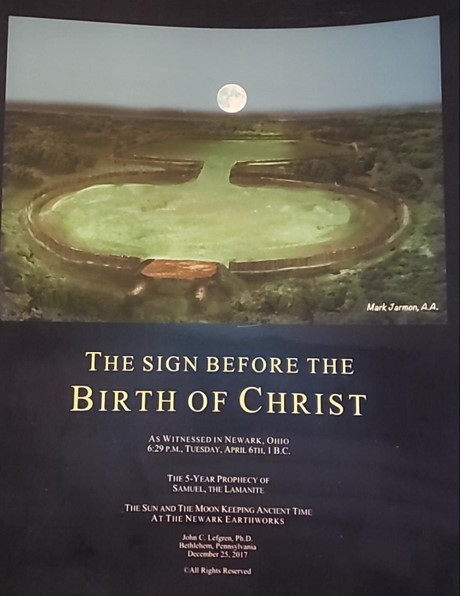
Details about the Book
Every historic account has a timeline and every time line fixes the interrelation of events. Once a historical account is fixed in time it has a context which is the subject of rigorous numerical analysis. The analysis of this study is to concentrate on the counting of days which are connected to the birth of Christ and to the visit of Christ at the Temple in the Land of Bountiful. The harmony for the events of more than 2,000 years ago rely on 8 primary sources: (1) the movements of the earth around its axis; (2) the movements of the earth around the sun; (3) the movements of the moon around the earth; (4) the physical presence and alignment of the world’s largest geometric earthen complex; (5) the 5-year prophecy of Samuel, the Lamanite, concerning the sign of the birth of Christ; (6) the eyewitness testimony of the fulfillment of that prophecy as seen by Nephi, the Son of Nephi; (7) the details which Mormon wrote concerning the day when the resurrected Christ appeared to the Nephites at the Temple in the Land of Bountiful, and (8) the archaeological search for the remains of seismic activity from the first century in or around the area of the Newark Earthworks in Central Ohio.
TWO IMPORTANT DATES IN BOOK OF MORMON HISTORY
1- Birth date of the Savior in Bethlehem based on the Newark Earthworks.
In early spring 1 BC Nephi, the Son of Nephi recorded the very events of Christ’s birth as he witnessed them in Ohio. In his account the conflict between the unbelievers and the believers over the exact day for the fulfillment of Samuel’s prophecy was a matter of life and death. Nothing could have been more serious. The conflict underscored how important the people considered the keeping of time. This conflict in the first century validated the fact why the people in Ohio were willing to expend so much time and material for the construction and maintenance of the Newark Earthworks. The measurement of time was an important part of their religion and of their social structure.
The accounts of the Book of Mormon allow us to reconstruct from the astronomical cycles of the moon and of the sun those events which occurred when the sign of the birth of Christ was given in the sky above the Earthworks. At 6:29 p.m., Tuesday, April 4th, 1 BC (Gregorian Calendar) the full moon was rising on the horizon in the east and the sun was setting on the horizon in the west. There was a perfect balance in nature. Just before that moment, Christ had told Nephi that “on the morrow come I into the world”. After that moment, after the setting of the sun, Samuel’s prophecy was fulfilled. Lights appeared in the sky saving the believers from certain death and “the people began to be astonished because there was no darkness when the night came”. On the morrow (Ohio time zone) Christ was born in Bethlehem during the night (Judea time zone) of April 5th/6th, 1 BC (Gregorian Calendar).
2- Date of the appearance of the Savior to the Nephites in Ohio, based on the Newark Earthworks.
The world’s largest earthwork works are located in Newark, Ohio. The central axis of these monuments are fixed at 58.1 degrees east of true north which is the azimuth for the maximum northern moonrise. This event occurs only once every 18.6 years and is the result of a slight tilt of the moon’s axis with respect to the earth. The tilt moderates the effect of the moon’s gravitational pull on the earth creating a necessary prerequisite for life. The moonrise for Saturday, October 3rd, AD 33 was in alignment the central line of the Newark Earthworks. At this time the Calendar of Moses required the Children of Israel to gather at the temple. On the rising of the sun of the next morning the Nephites were gathered at the temple in Bountiful to observe the 7th day of the Feasts of Tabernacles. On this day Christ came to the Nephites in His resurrected glory.
The first month, Nisan, of the Hebrew Calendar is fixed so that the first full moon of the year will be after the spring equinox. Six months later during harvest time the Law of Moses in Exodus 23:16 states that “the feast of harvest, the first fruits of thy labours, which thou hast sown in the field: and the feast of ingathering, which is in the end of the year.” So, when Mormon wrote that in the ending of the 34th year Christ came to America, he was using the language of Moses to describe that it is was at the time of the feast of ingathering or tabernacles. (See 3 Nephi 10:18-19)
By Dr John C. Lefgren Ph.D. Economic History

